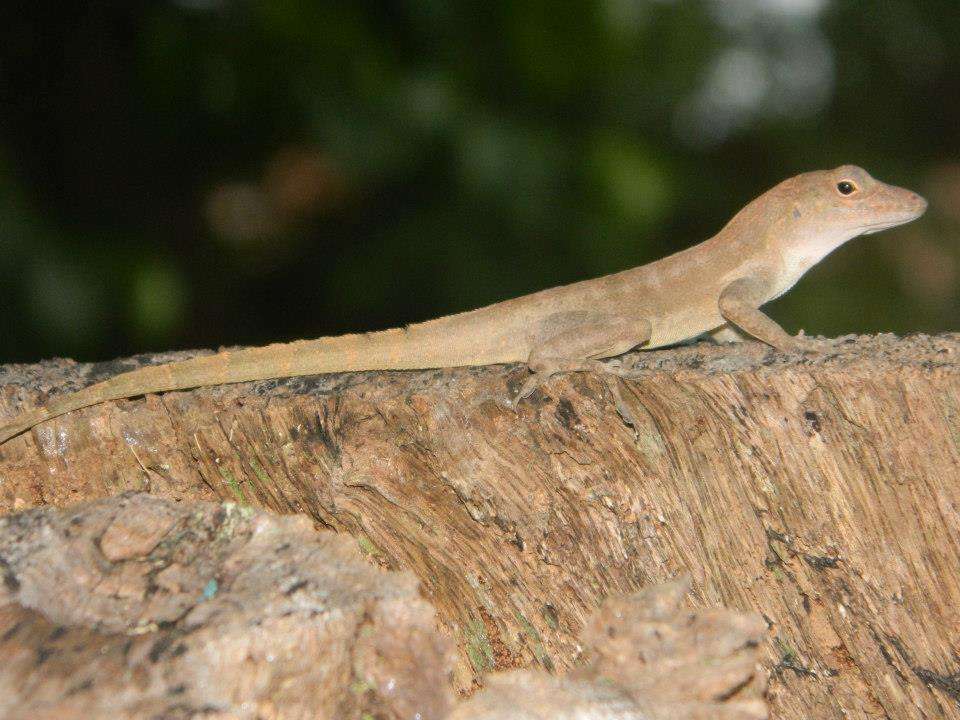
Description:
Scientific name: Anolis cristatellus
Life span: 8 Years +
A little species of anole in the Dactyloidae family is called Anolis cristatellus. Although it is a small to moderately-sized species (in comparison to Central American anoles), it is stocky, muscular, and aggressive (compared to insular Caribbean anoles). Moreover, juvenile lizards have varied colors than adults. The males of this species can be identified by their permanently erect caudal crests, which are bony expansions of the vertebrae that form a high sail- or fin-like structure running down the top of their tails. Down the animal’s back, the crest is extremely short before increasing in height at the nape of the neck. The cross-section of the tail is compressed.
Native Region/Habitat
Neotropical regions, including Puerto Rico (particularly the islands of Vieques and Culebra) and the Caribbean islands, are home to crested anoles. Moreover, they are regarded as introduced species in Costa Rica, the Dominican Republic, and Florida. This species frequently inhabits arboreal settings and is a perching species. Males, in particular, will exhibit to other animals by climbing up tree trunks. They have been referred to as a trunk-ground species since they prefer to stay near to the ground.

Behavior:
Diurnal lizards called crested anoles use perching to attract females, fend off rival males, and forage for food like insects, fruit, frogs, and even other lizards. Crested anoles typically perch parallel to the tree with their heads downward. Although they can scale heights of up to 3 metres, they seem to favors locations with more sunlight, such as fence posts, tree trunks, or building walls. In order to sleep at night, men will scale the highest trees, while females and immature males stay below.
This species has strong territorial instincts. It employs dewlap extensions and threat demonstrations that resemble pushups. Furthermore, typical in these presentations is head-bobbing. The male will typically make these threatening displays while perched on their territory. Any nearby males will be made aware that they own the territory by doing this. These actions also closely resemble mating and predator-repelling activities. In the event that other males do not flee in response to these displays, they usually engage in conflict over territory and access to females.
Care As a pet/In captivity:
Diet:
As insectivores, crested anoles require crickets as their main source of food. Hatchlings and young animals need to be given as many crickets each day as they can consume in 15 minutes. Adults only require feeding every five days. Clear the cage of any extra crickets. To avoid choking, the length of the cricket should be equal to the breadth of your anole’s head.
Add calcium and vitamin D3 supplements to dietary items. The guts of crickets must be loaded. This entails feeding them healthy food because what you feed your crickets becomes what you feed your anole.
Housing:
Crested anoles can survive in a 10-gallon habitat, which is all they require. Add 5 liters of space for every new anole. Males shouldn’t live in the same house because they will fight. Aquariums with a screen lid work nicely as an enclosure for your anole. Due to the fact that crested anoles spend much of their time in the air, height is a significant factor.
Temperature/Lighting:
Crested anoles can tolerate a range of temperatures; however, they cannot tolerate temperatures above 85 degrees Fahrenheit in their enclosures. A 30-watt light bulb works well if more heat is needed. Because they rarely lay on the ground, this species does not respond well to heat pads.
For healthy digestion and to get enough vitamin D3 like they would in the wild, crested anoles need UVA/UVB lights. Your anole should be within 10 inches of a UV bulb, which should be changed every six months.
Humidity/Water:
Since this plant is native to a tropical region, significant humidity is necessary. To prevent dehydration, keep the humidity level around 70% during the day. This can be accomplished by employing an automatic misting system or repeatedly spraying down the enclosure throughout the day. Because they will drink water droplets that fall from the glass and plants in their enclosure, crested anoles do not need a water bowl.
Table





